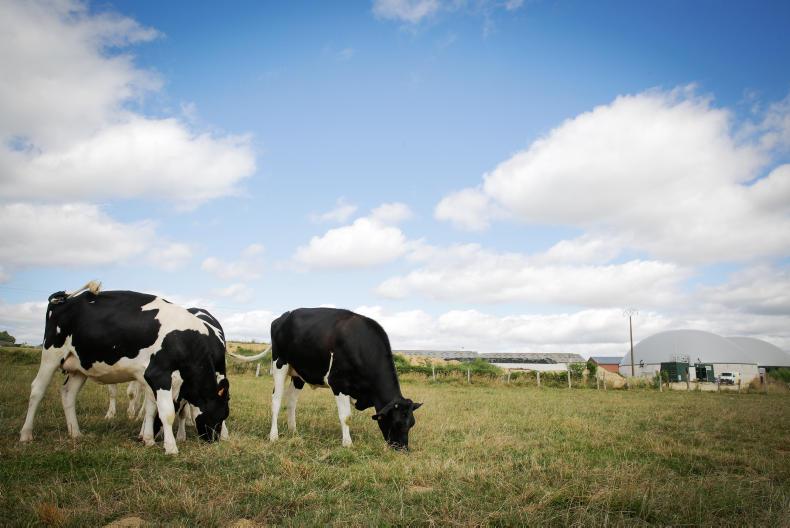Introducing more clover and anaerobic digestion could boost grassland productivity while reducing its greenhouse gas emissions, according to the Sustainability Energy Authority of Ireland. “This scenario is very promising,” SEAI bioenergy programme manager Matthew Clancy told last Thursday’s European Biomethane Conference in Dublin. Use of red clover in grass swards and fertilisation with digestate from anaerobic digestion (AD) instead of synthetic fertiliser was found to achieve yields of 13tDM/ha while reducing emissions from grassland by 76%. The gas produced in the process could cover 2% of Ireland’s energy needs, he said, and AD demand for grass could help farmers reduce livestock numbers and emissions while keeping their income.
Listen to ""No biogas industry without farmers"" on Spreaker.
Industry leaders confirmed demand for green gas. “I would welcome every molecule of biomethane in our network,” said Ian O’Flynn, head of commercial at Gas Networks Ireland. Calor Gas Ireland has seen BioLPG achieve 47% of its three-year sales target within five months of its launch, chief executive Gino Vansteenhuyse said. While it is currently imported from the Netherlands, Vansteenhuyse said 25 suppliers were now offering to produce the renewable gas for Calor and he ultimately expected to have one in Ireland. The company plans to go 100% renewable by 2040.
Demonstration plant
Minister for Agriculture Michael Creed addressed the first edition of the conference outside Germany, saying his Department and that of Climate Action were collaborating to consider “further potential for the agricultural sector to contribute to Ireland’s significant renewable energy and greenhouse gas targets”. He announced funding for a demonstration plant injecting biomethane from farms into the national grid in Co Cork. Guillaume Virmaux of the French gas network GrDF said it was connecting one plant to the grid every three weeks for the past two years, most of them on small farms thanks to targeted government support. “In the very near future, we’re looking at a biomethane scheme in Ireland” with an estimated 6,500 rural jobs potential, said PJ McCarthy, chair of the Renewable Gas Forum of Ireland.
Read more
Climate not the only factor in finding livestock balance
Calor boost to biogas market – with Dutch agri-based supplies
Gas grid wants 10m tonnes of silage from farmers
Introducing more clover and anaerobic digestion could boost grassland productivity while reducing its greenhouse gas emissions, according to the Sustainability Energy Authority of Ireland. “This scenario is very promising,” SEAI bioenergy programme manager Matthew Clancy told last Thursday’s European Biomethane Conference in Dublin. Use of red clover in grass swards and fertilisation with digestate from anaerobic digestion (AD) instead of synthetic fertiliser was found to achieve yields of 13tDM/ha while reducing emissions from grassland by 76%. The gas produced in the process could cover 2% of Ireland’s energy needs, he said, and AD demand for grass could help farmers reduce livestock numbers and emissions while keeping their income.
Listen to ""No biogas industry without farmers"" on Spreaker.
Industry leaders confirmed demand for green gas. “I would welcome every molecule of biomethane in our network,” said Ian O’Flynn, head of commercial at Gas Networks Ireland. Calor Gas Ireland has seen BioLPG achieve 47% of its three-year sales target within five months of its launch, chief executive Gino Vansteenhuyse said. While it is currently imported from the Netherlands, Vansteenhuyse said 25 suppliers were now offering to produce the renewable gas for Calor and he ultimately expected to have one in Ireland. The company plans to go 100% renewable by 2040.
Demonstration plant
Minister for Agriculture Michael Creed addressed the first edition of the conference outside Germany, saying his Department and that of Climate Action were collaborating to consider “further potential for the agricultural sector to contribute to Ireland’s significant renewable energy and greenhouse gas targets”. He announced funding for a demonstration plant injecting biomethane from farms into the national grid in Co Cork. Guillaume Virmaux of the French gas network GrDF said it was connecting one plant to the grid every three weeks for the past two years, most of them on small farms thanks to targeted government support. “In the very near future, we’re looking at a biomethane scheme in Ireland” with an estimated 6,500 rural jobs potential, said PJ McCarthy, chair of the Renewable Gas Forum of Ireland.
Read more
Climate not the only factor in finding livestock balance
Calor boost to biogas market – with Dutch agri-based supplies
Gas grid wants 10m tonnes of silage from farmers






 This is a subscriber-only article
This is a subscriber-only article










SHARING OPTIONS: